AiPrise
10 min read
October 29, 2025
Optimizing KYC Verification with Blockchain Technology

Key Takeaways










Traditional KYC systems are slow, repetitive, and costly. Banks and fintech firms often verify the same customer multiple times across institutions, increasing both risk and compliance fatigue.
Blockchain offers a solution. With its decentralized, tamper-proof architecture, verified identities can be securely shared across trusted parties — reducing duplication and fraud.
Many experts are now documenting this shift in detailed kyc blockchain whitepapers. These whitepapers outline how smart contracts, encrypted identity data, and distributed ledgers can streamline verification while improving compliance and trust.
In this blog, we break down the key challenges in legacy KYC systems, how blockchain improves them, and what insights current whitepapers reveal for businesses looking to upgrade.
In a Nutshell
- Traditional KYC systems are inefficient, involving repeated document submissions, high compliance costs, and poor user experiences.
- Blockchain brings decentralization, security, and trust to KYC by allowing verified identities to be reused across institutions.
- A typical KYC blockchain whitepaper outlines frameworks involving shared ledgers, verifiable credentials, user-controlled data, and smart contract automation.
- Blockchain-based KYC systems offer measurable benefits — including up to 50% faster onboarding and significantly lower compliance costs.
- Global pilots in regions like Singapore, Dubai, and the EU have already shown strong results in real-world blockchain KYC implementation.
Traditional KYC: Challenges and Limitations
Legacy KYC systems rely on centralized data collection, manual checks, and siloed processes. Each institution must independently verify the identity of a user, even if that user has been verified elsewhere.
This leads to redundant verification, longer onboarding times, and a poor customer experience. Businesses spend heavily on compliance teams, document management, and fraud detection, yet identity fraud remains a growing issue.
Here are the main challenges:
- Centralized Storage: Sensitive user data is stored in centralized databases, which are frequent targets for breaches.
- Repetitive Checks: Customers must submit the same documents multiple times across platforms.
- High Compliance Costs: Manual reviews and third-party verifications increase operating costs.
- Slow Onboarding: Delays in verification can lead to user drop-offs and lost revenue.
- Limited Transparency: Auditing and proving compliance becomes complex due to fragmented data trails.
These issues have led companies to explore more secure and efficient alternatives, one of which is the blockchain technology.
Suggested read: Addressing KYC Challenges in Fragmented Identity Verification
The Role of Blockchain in KYC Verification
Blockchain offers a decentralized way to store, share, and verify identity data. Instead of each institution running isolated KYC checks, they can access a shared, tamper-proof record of verified identities with the user’s consent.
At its core, blockchain brings three key advantages to KYC:
- Immutability: Once data is added to the blockchain, it cannot be altered. This ensures the integrity of verification records.
- Transparency with Control: Institutions can view verification status without accessing raw documents. Users retain control over what they share and with whom.
- Automation via Smart Contracts: Predefined rules can trigger automatic KYC validations, making compliance faster and less error-prone.
A customer can complete KYC once and share proof of verification with multiple services. These features of blockchain kyc cut costs and shortens onboarding time significantly.
These capabilities form the foundation of most frameworks described in a KYC blockchain whitepaper — where trust is distributed, but compliance remains intact.
Key Takeaways from a KYC Blockchain Whitepaper
Most KYC blockchain insights focus on designing systems that are both secure and compliant. While the specifics vary, several recurring themes and components appear across top whitepapers:

Shared Network of Trusted Entities
Whitepapers often propose a consortium of verified institutions — such as banks, exchanges, and regulators — that can access and verify identity data from a shared ledger.
User-Centric Identity Model
The user owns their identity. Through cryptographic keys, they grant or revoke access to their KYC data. This approach ensures privacy and control.
Verifiable Credentials
Instead of sharing raw documents, users share cryptographic proofs of verification. These can be instantly validated without reprocessing the original data.
Smart Contracts for Compliance
Automated rules check whether a user meets regulatory requirements before granting access. This reduces manual intervention and ensures consistency.
Data Minimization and Consent
Only essential information is shared. Access logs are maintained on-chain, allowing real-time auditing and traceability.
These frameworks aim to reduce duplication, enhance data security, and build a global standard for interoperable identity verification.
Suggested read: What Is KYC In Crypto Security And Compliance, And Why Does It Matter?
Benefits of Using Blockchain for KYC
Blockchain-based KYC solutions are designed to solve the biggest issues in identity verification: cost, time, and security. As more organizations adopt this model, the benefits are becoming quantifiable.

Faster Onboarding
Traditional KYC checks can take up to 10 days. With reusable identity data on blockchain, onboarding time can drop by 40%, especially for returning or already-verified users.
Lower Compliance Costs
Financial institutions spend large sums annually on KYC-related processes. A proof‑of‑concept by KPMG estimated that a blockchain‑enabled KYC utility could deliver cost savings of 25‑50% by reducing duplication and providing a clear audit trail.
Improved Data Security
Blockchain eliminates the need for centralized storage of personal documents. Identity data is encrypted and shared only with permission, reducing the risk of large-scale breaches.
Real-Time Auditing
Every access or update on the blockchain is time-stamped and immutable. This creates a live audit trail that improves transparency and simplifies compliance checks.
Better User Experience
Customers no longer need to upload documents repeatedly. With verified credentials, they can access services faster while staying in control of their data.
Pilot programs in financial hubs like Singapore, the UAE, and parts of the EU have already demonstrated strong adoption potential.
Governments and institutions in Singapore, Dubai, and parts of the European Union have launched pilot programs to test blockchain-powered KYC. For example, the Monetary Authority of Singapore(MAS) introduced a shared KYC utility ‘COSMIC’, allowing banks to access common identity data.
In Dubai, the Blockchain KYC Platform connects banks and licensing authorities to reduce onboarding time. These early implementations have shown faster approvals, improved security, and higher user satisfaction.
While the benefits are clear today, it’s important to understand how to optimize your kyc for a much faster and efficient verification process.
How to Optimize KYC Verification Using Blockchain
Blockchain technology doesn't just enable a new way to handle KYC — it allows businesses to optimize the entire verification process from onboarding to ongoing compliance.

Here are the key strategies to maximize the impact of blockchain in KYC:
Eliminate Redundant Checks
With reusable credentials, customers can complete KYC once and share verified proofs with multiple institutions. This reduces operational friction and prevents duplicate verification.
Automate Compliance Triggers
Smart contracts can automate key compliance steps — such as age checks, document expiry alerts, or PEP list screening — allowing teams to shift focus from manual reviews to oversight.
Use Permissioned Ledgers for Security and Scalability
Public blockchains are not ideal for KYC. Using a permissioned ledger ensures only trusted entities have access to data, enabling faster processing, better governance, and regulatory alignment.
Implement Selective Disclosure
Optimize privacy and data efficiency by sharing only what’s necessary. For example, prove that a user is over 18 without revealing their full date of birth.
Enable Real-Time Reverification
Optimize post-onboarding compliance by setting up triggers for events like address change or ID expiration. This ensures data remains up-to-date without full re-verification cycles.
These techniques turn blockchain from a static data layer into a dynamic KYC optimization engine, reducing time, cost, and error while improving customer experience and compliance reliability.
Identity verification has evolved over the years and how blockchain has found its place in this journey.
Evolution of KYC Verification and Blockchain’s Entry into Identity Systems

Identity verification has come a long way — from manual processes to digital platforms, and now to decentralized systems. Here's a brief look at that progression:
Manual Verification (Pre-2000s)
Most KYC processes were handled in person. Customers submitted paper documents, which were manually reviewed by compliance teams. This approach was time-consuming and difficult to scale.
Digital KYC and Centralized Databases (2000s–2010s)
With the rise of online banking and fintech, identity verification moved online. Users uploaded scanned documents, and institutions stored them in centralized databases. APIs, OCR, and facial recognition were later introduced to speed up verification.
Rise of RegTech and AI-Powered KYC (2015–2018)
Financial platforms began using AI to detect fraud, flag inconsistencies, and automate compliance tasks. Still, data silos and repeated verifications remained a major pain point.
Blockchain Enters KYC (2016–2019)
The idea of using blockchain for identity verification gained traction. Projects such as uPort, laid early groundwork with self‑sovereign identity models. Governments and financial regulators started pilot programmes (for example in the UAE and parts of Europe) to test blockchain‑based KYC systems and build foundational frameworks for trust, data sharing and permissioned networks.
Current Phase (2020s–Present)
We are now seeing increased interest in decentralized identity and verifiable credentials. Financial regulators are exploring ways to support blockchain-backed verification without compromising data protection laws.
This evolution sets the stage for what blockchain can offer: trust, portability, and compliance. All in a single framework. However, this too requires certain ids to complete the KYC verification.
IDs Required for Blockchain-Based KYC
While blockchain changes how identity data is stored and shared, it still relies on standard government-issued documents for the initial verification process. These IDs are used to create verified credentials, which can then be reused across platforms.
The most commonly required documents include:
- National ID Card
Used widely for citizen identification and available in most countries.
- Passport
Accepted globally, especially useful for international verification and cross-border compliance.
- Driver’s License
Often used as both identity and address proof in many jurisdictions.
- Utility Bills or Bank Statements
These support address verification and are required under many AML regulations.
- Selfie or Live Video Check
Used for liveness detection and biometric match against ID documents.
Once a user completes the verification using these IDs, blockchain systems can store a hash of the verification result. This allows institutions to confirm the identity without reprocessing the documents.
This model protects user privacy and ensures compliance checks can be repeated or audited without reintroducing risk.
Comparison Table: Traditional KYC vs Blockchain-Based KYC
To better understand how blockchain transforms identity verification, here’s a side-by-side comparison of key differences between traditional KYC and blockchain-based KYC:
This comparison reflects the core value blockchain adds: a scalable, secure, and user-first approach to compliance.
How AiPrise Supports Blockchain-Based KYC Verification
AiPrise provides a powerful suite of identity verification tools designed to work seamlessly with both traditional and decentralized systems. For businesses adopting blockchain-based KYC, AiPrise delivers the flexibility, scale, and intelligence needed to ensure smooth onboarding and ongoing compliance.
By combining document verification, fraud prevention, and risk intelligence, AiPrise simplifies complex identity workflows without compromising security or accuracy.
Here’s how AiPrise enhances blockchain-powered KYC systems:
- Document Verification Across 220+ Countries
AiPrise supports over 12,000 government-issued documents, allowing businesses to onboard users globally and create trusted digital identities from verified sources. - Real-Time Biometric Liveness Detection
To ensure user authenticity, AiPrise performs instant biometric liveness checks— an essential layer before issuing any verifiable credential on-chain. - Duplicate Identity Protection (1:N Face Match)
Facial data is cross-referenced to detect and prevent duplicate or fraudulent accounts, enhancing the integrity of shared identity records. - Automated AML Screening
AiPrise runs real-time checks against global watchlists, politically exposed persons (PEPs), and adverse media — aligning with AML standards even in decentralized environments. - Dynamic Risk Scoring and Profiling
Customer risk levels are evaluated using behavioral and transactional data, helping businesses stay compliant with evolving regulations. - Continuous Reverification
The system can automatically trigger reverification events if sensitive information changes, such as ID expiry or address updates, keeping identity data valid over time.
AiPrise’s tools are designed to support emerging verification models, including blockchain-based frameworks. This ensures businesses stay ahead of compliance demands while offering users a faster, more secure verification experience.
Conclusion
Blockchain‐enabled verification is more than a promising idea. It is a practical path forward for KYC. Traditional approaches are costly, repetitive, and vulnerable. In contrast, a modern system built around decentralized identity, verifiable credentials, and shared ledgers holds the potential to streamline onboarding, boost security, and cut compliance costs.
For businesses ready to explore how this plays out in real‑world systems, now is the time. If you’re looking to see how this works in your organisation, Book a Demo with AiPrise to learn how blockchain‑ready verification can be integrated into your workflow.
Frequently Asked Questions(FAQs)
Q1. What is blockchain‑based KYC?
Blockchain‑based KYC uses a shared or permissioned distributed ledger to store or reference verified identity credentials, allowing multiple institutions to rely on the same verification instead of repeating it.
Q2. How does blockchain improve the KYC verification process?
It improves KYC by enabling data reuse, reducing duplication of checks, enhancing auditability via immutable logs, and automating workflows via smart contracts.
Q3. Is blockchain‑based KYC compliant with regulations?
Yes, when implemented correctly. Many frameworks emphasise permissioned architecture, data privacy, user consent and audit trails to align with AML, GDPR and other requirements.
Q4. What are the actual benefits of using blockchain for KYC?
Key benefits include faster onboarding, lower cost, better security, improved user experience and one‑time verification that multiple parties can rely on.
Q5. Are there challenges in implementing blockchain for KYC?
Yes. Common challenges include interoperability, governance of shared networks, scalability of blockchain infrastructure and ensuring legal/regulatory alignment across jurisdictions.
You might want to read these...

Aiprise has helped streamline our KYB (Know Your Business) flow in 100+ countries. No other tool comes close.





Speed Up Your Compliance by 10x
Automate your compliance processes with AiPrise and focus on growing your business.









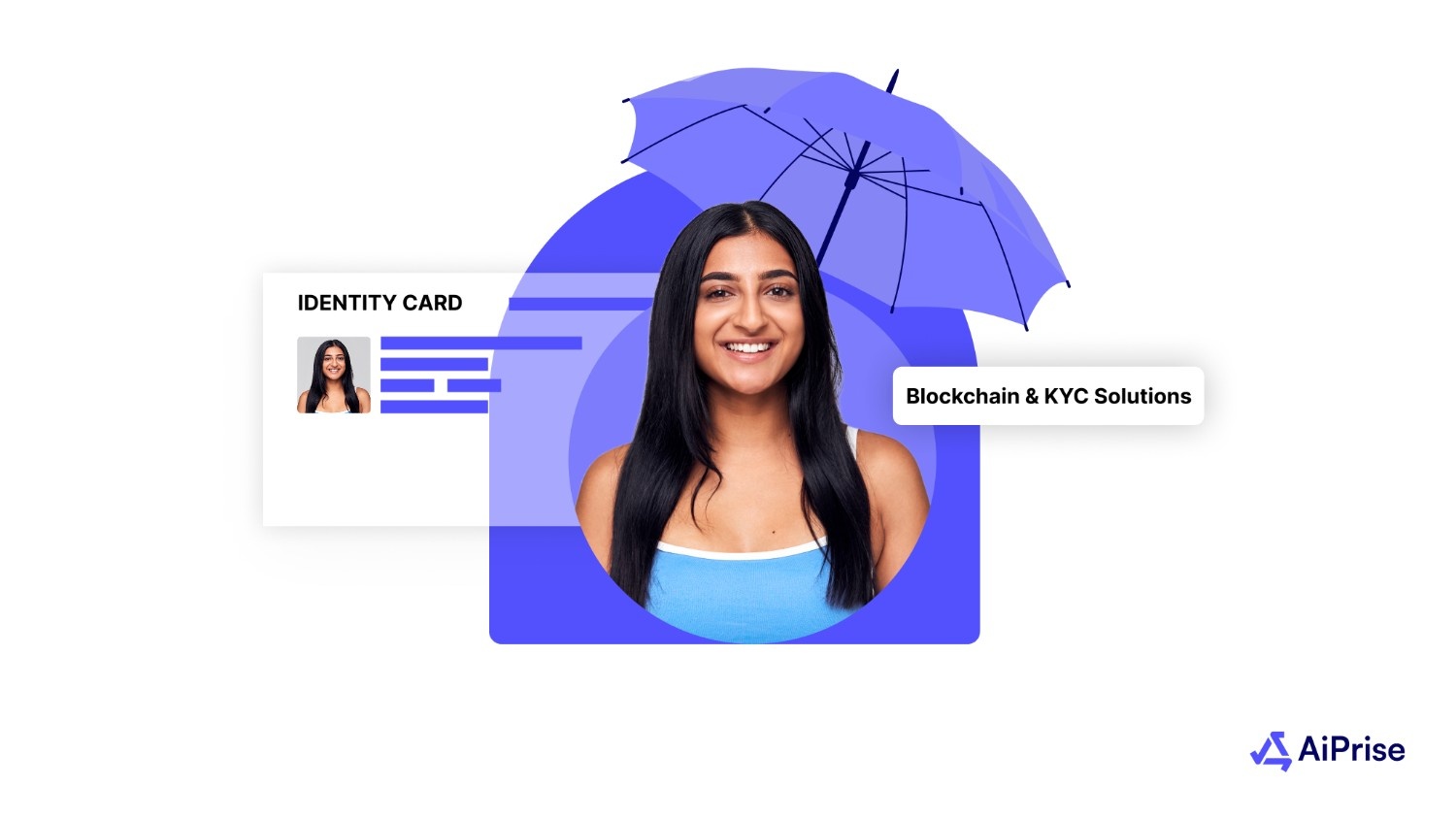

.jpeg)
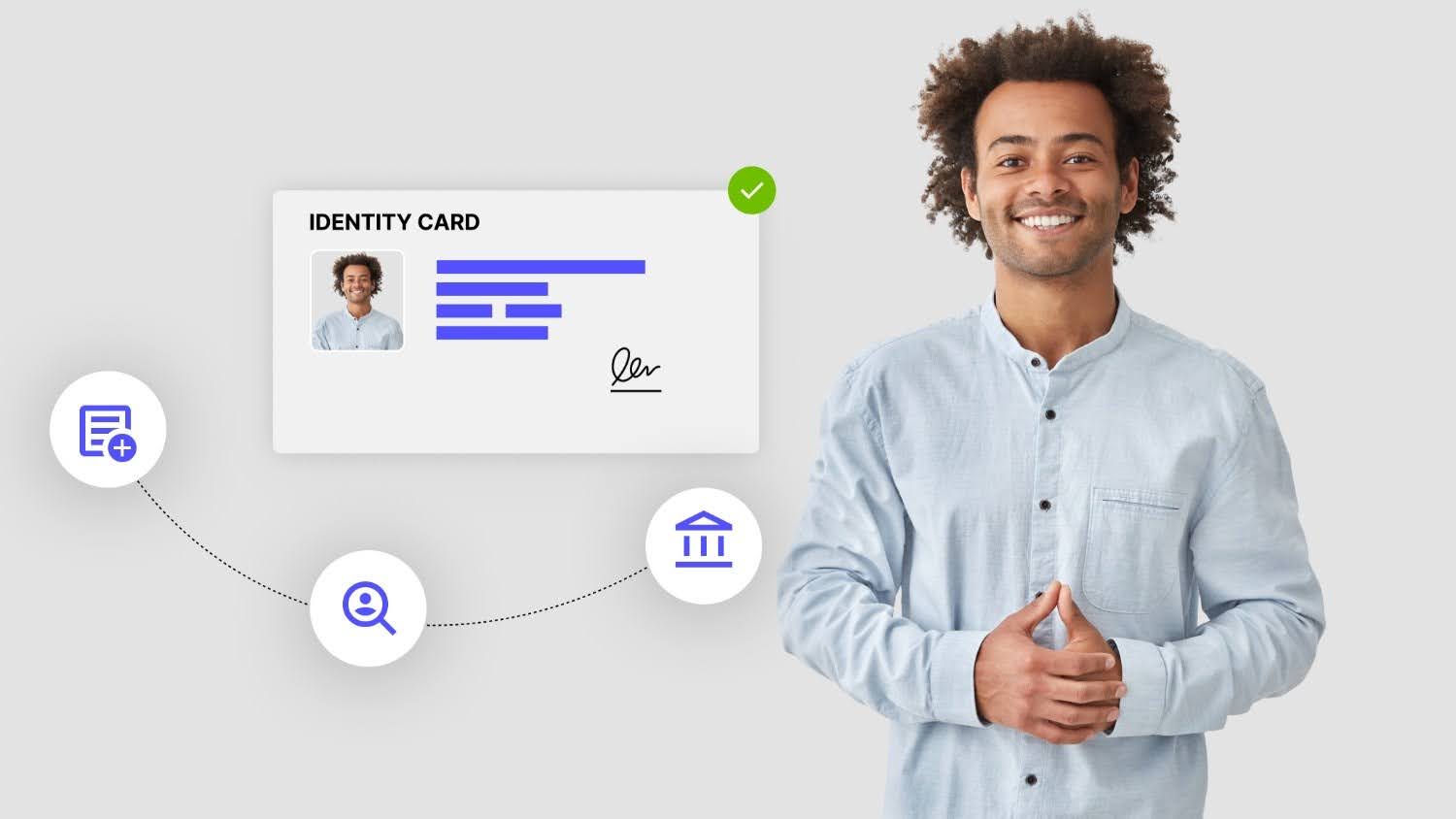

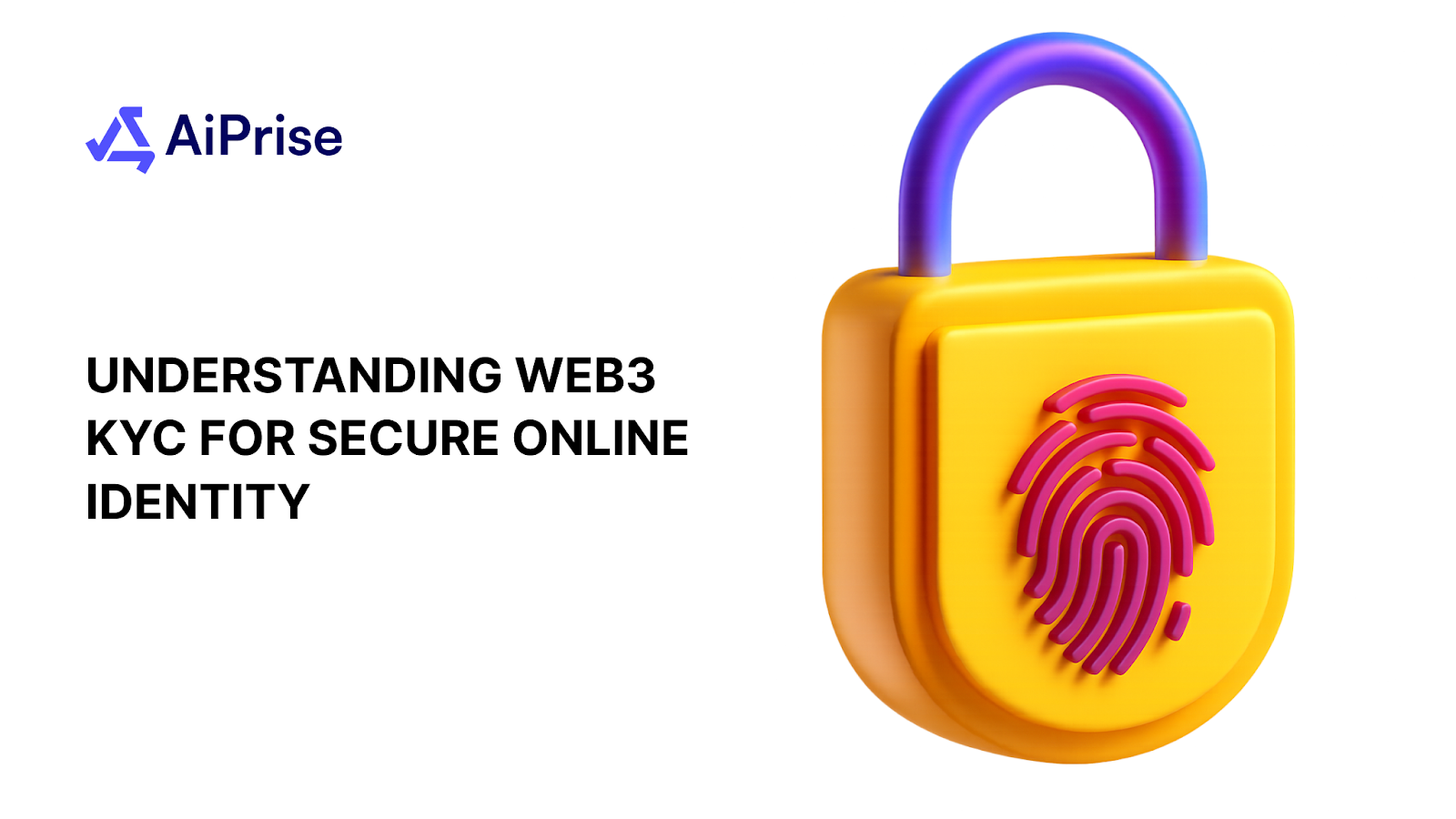
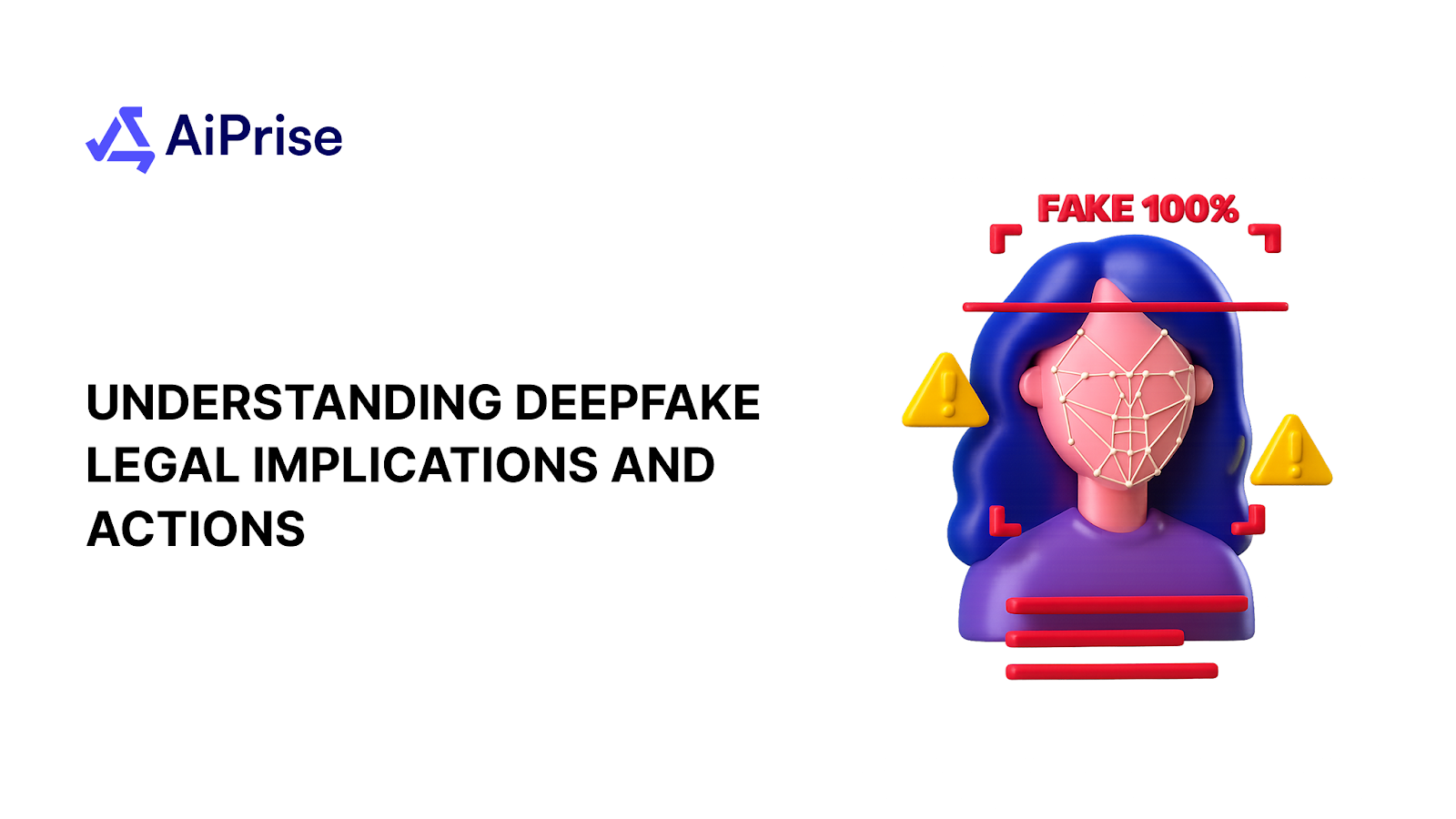
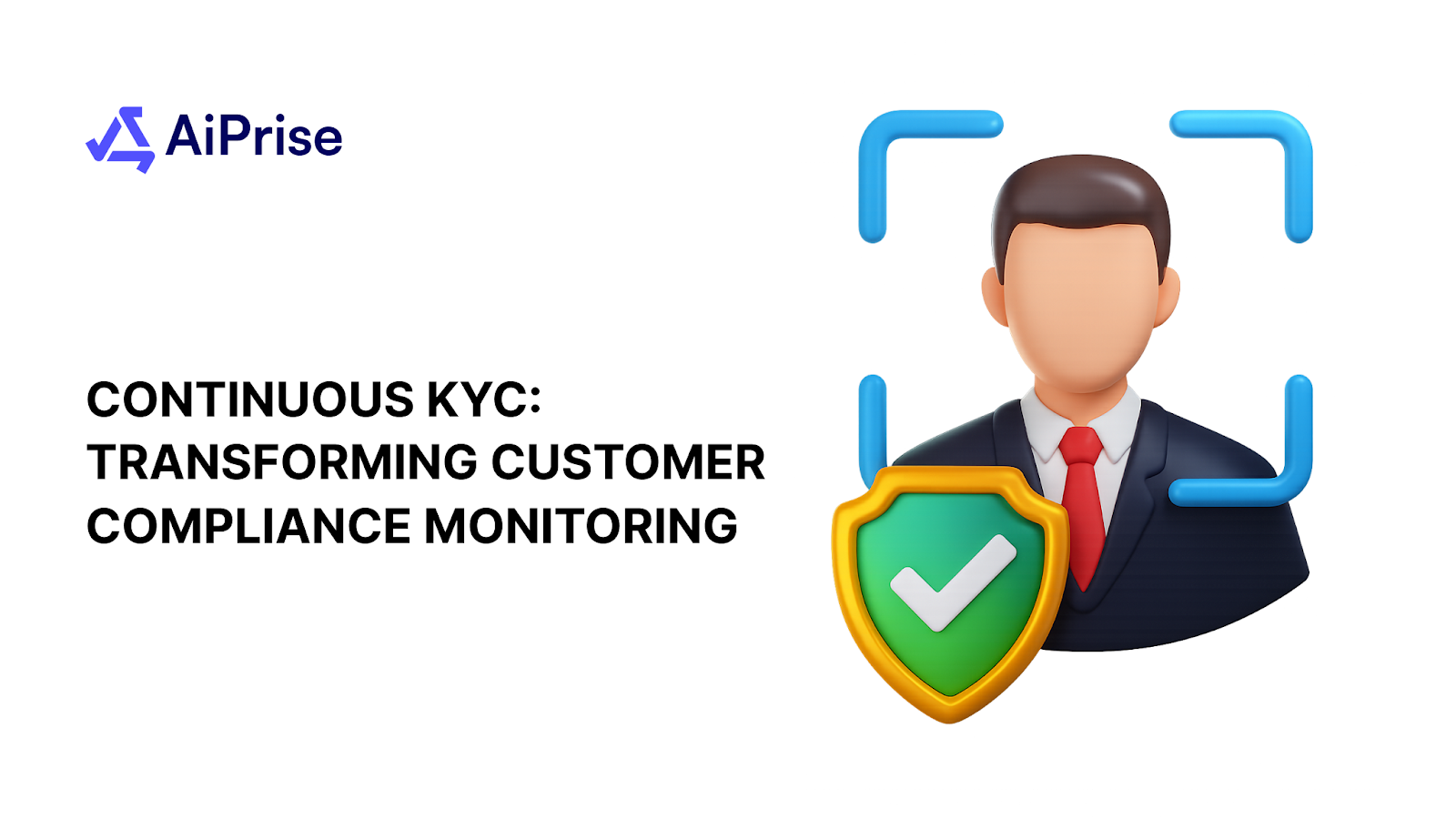
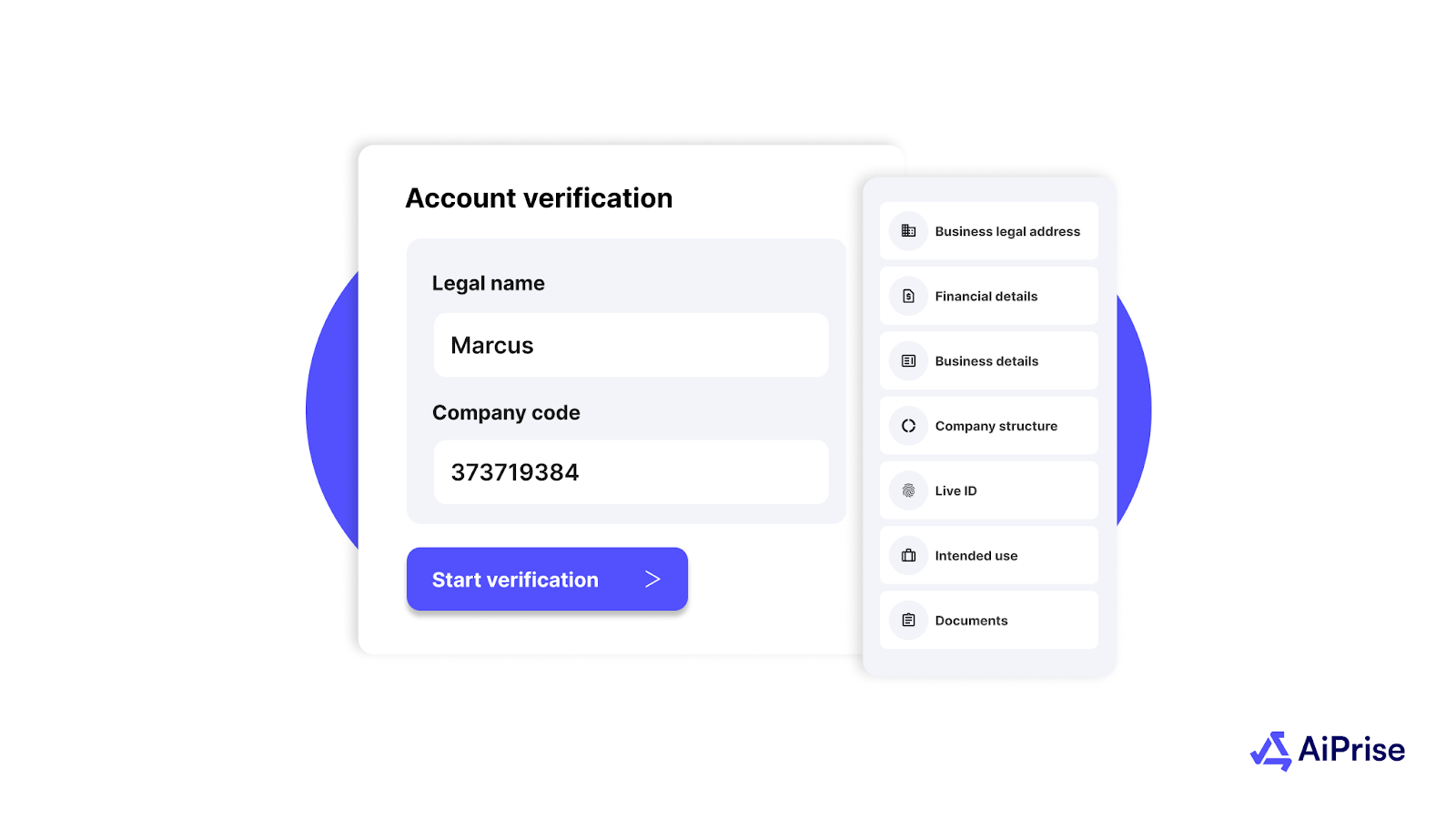
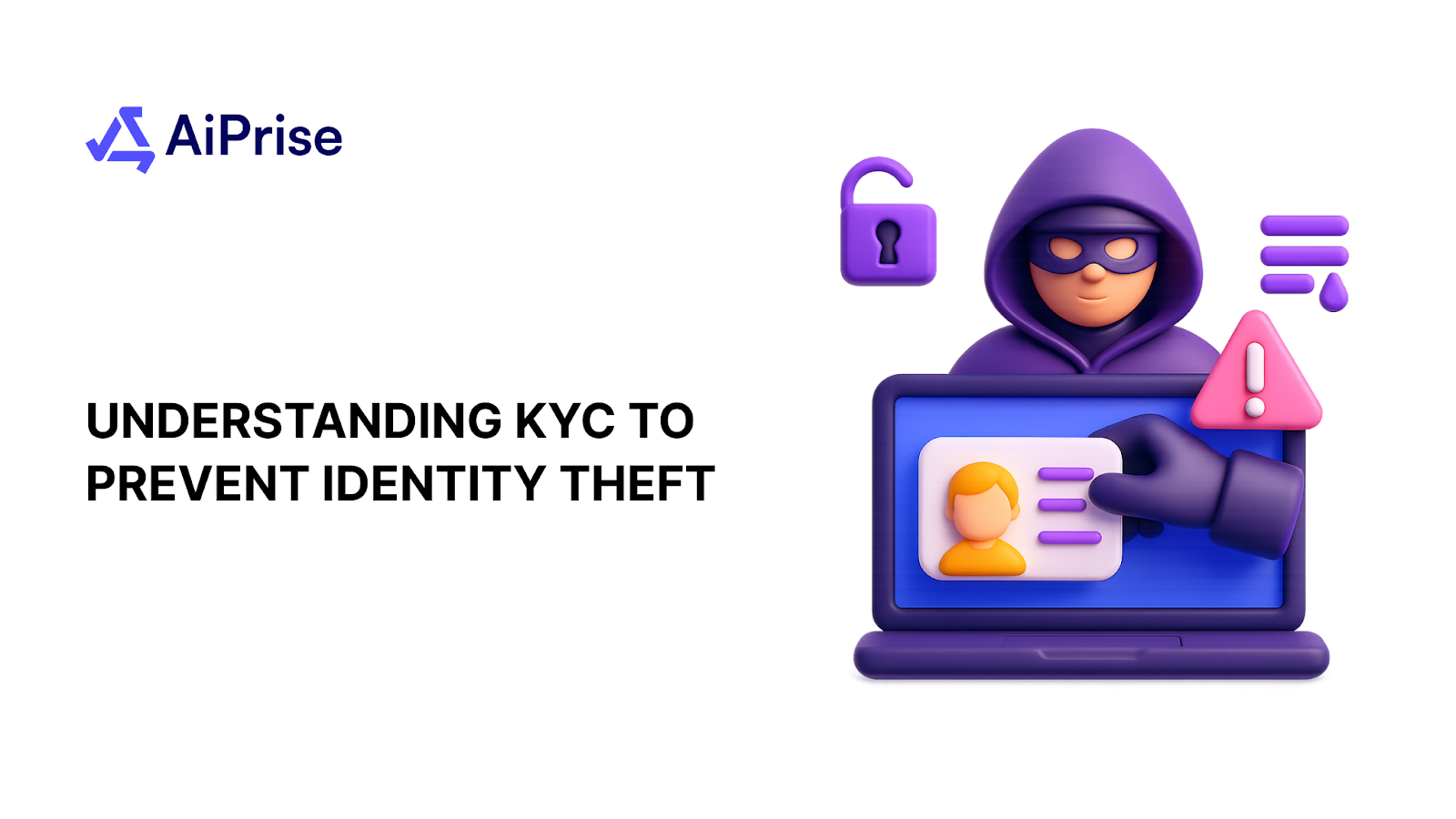


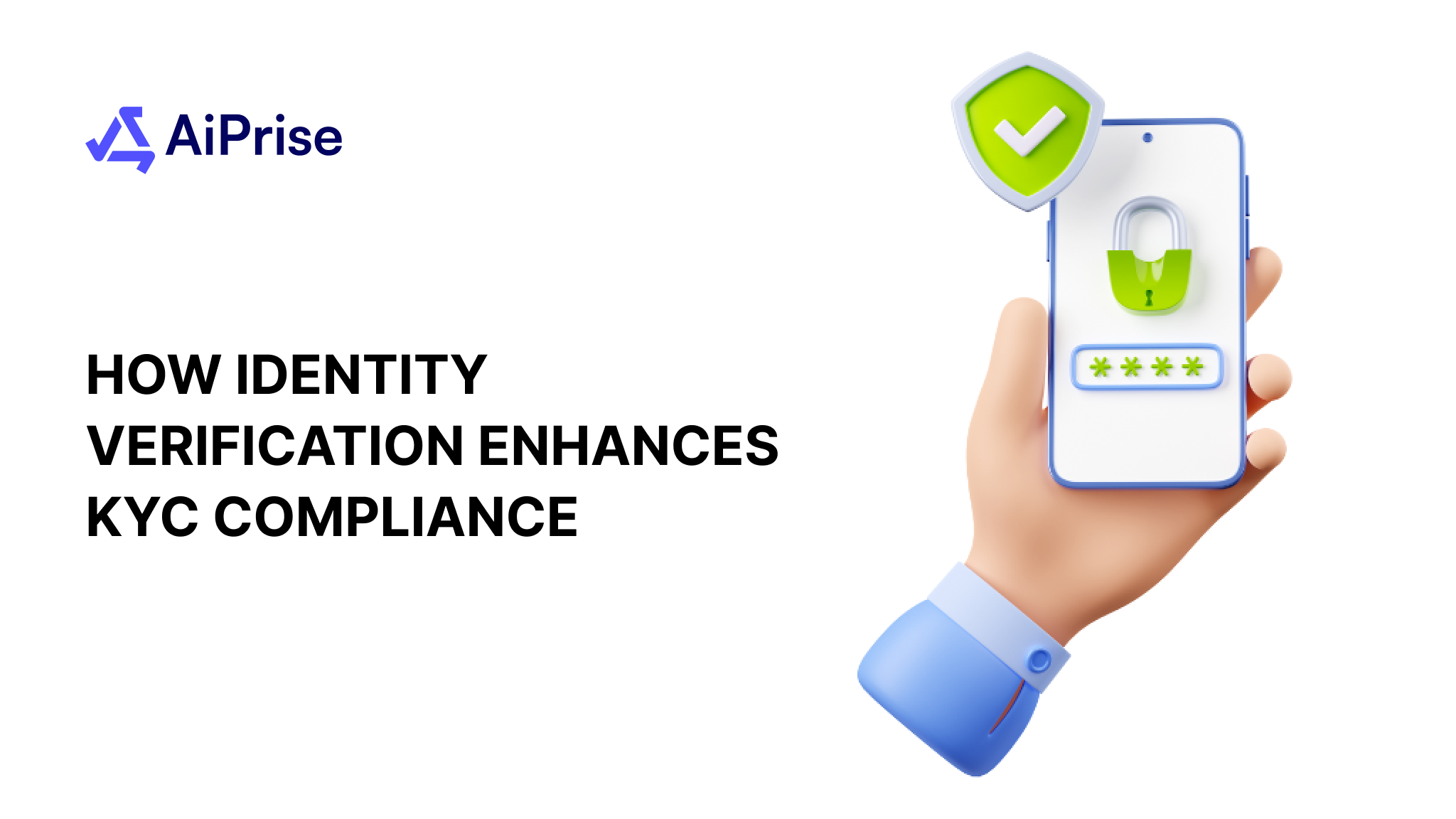

.png)

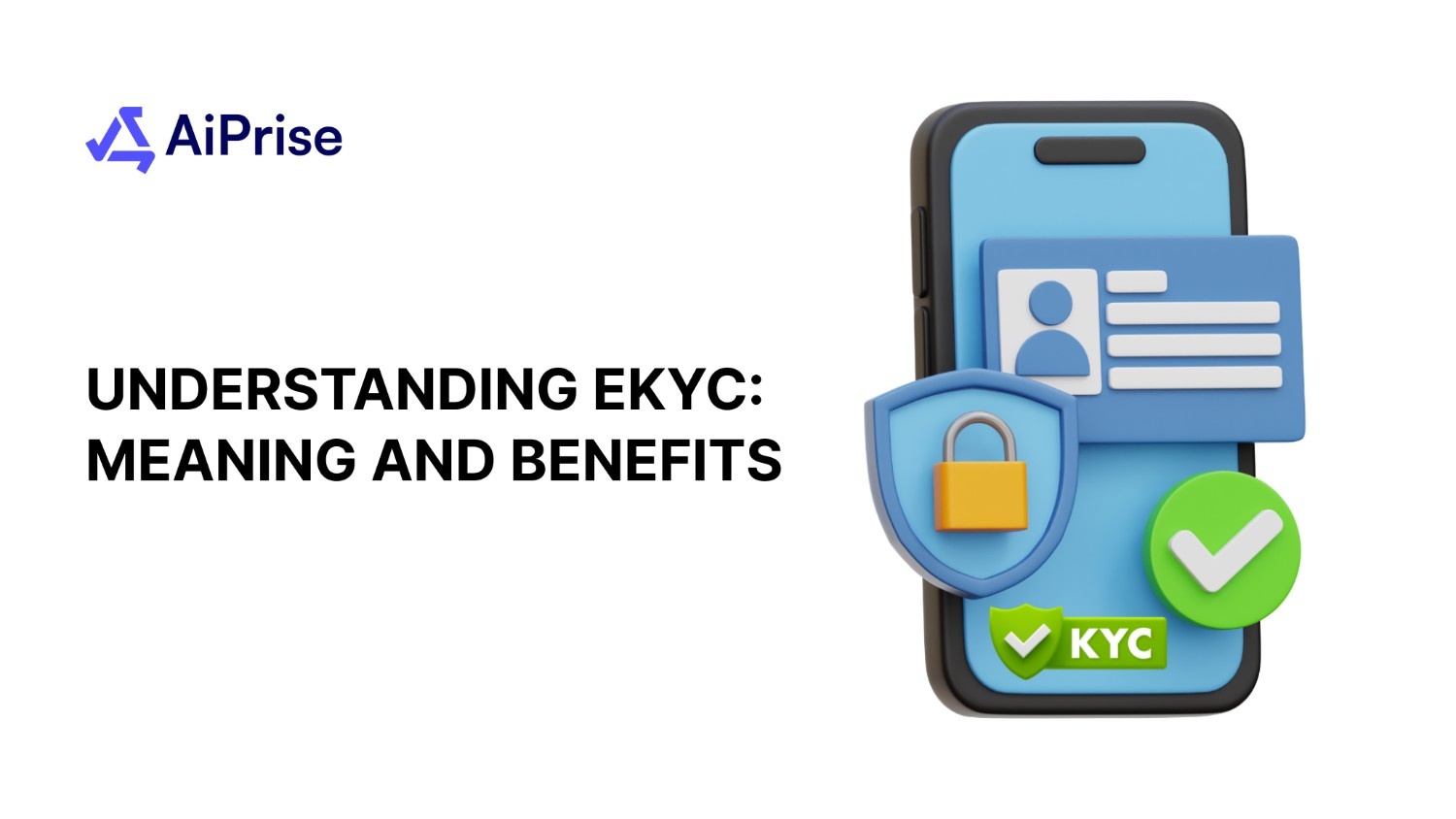

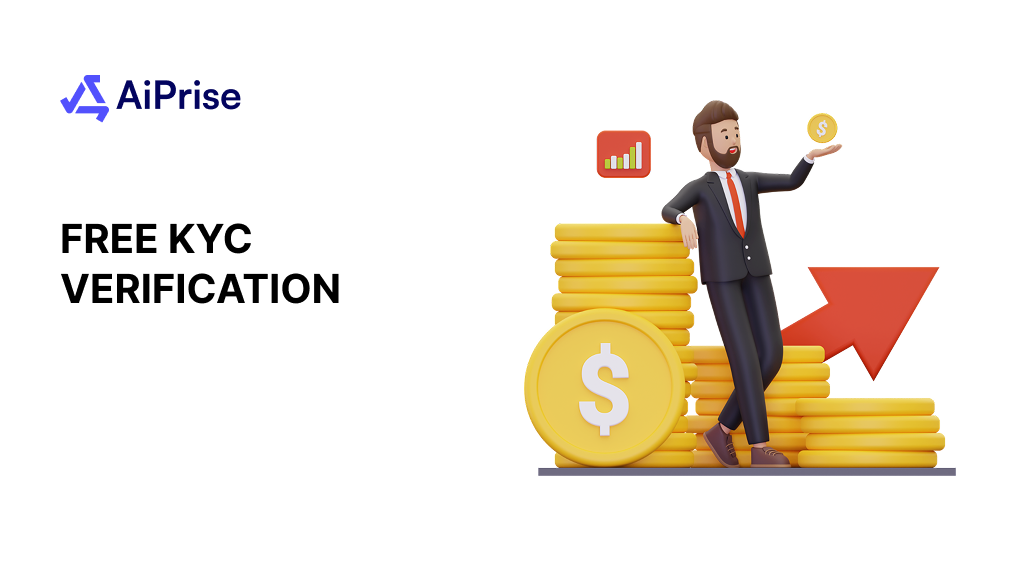
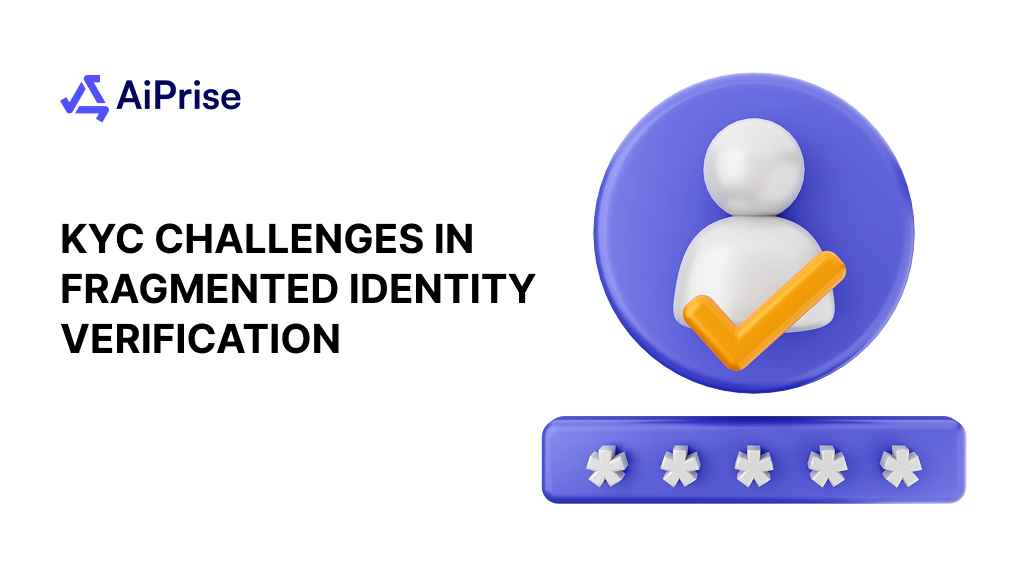
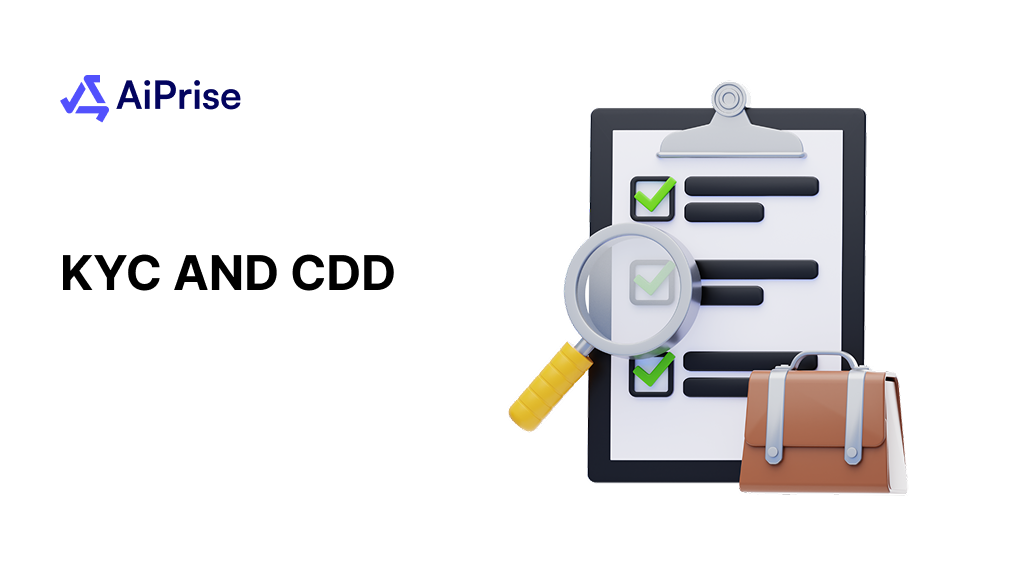








.png)






















